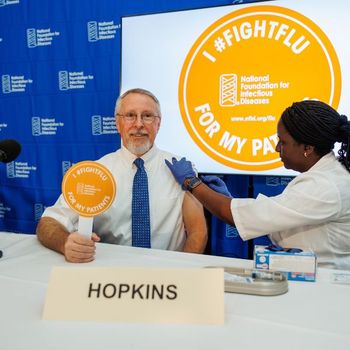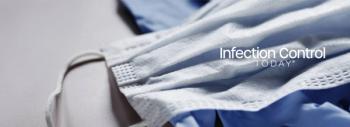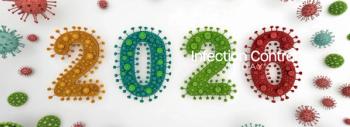
Pilot Implementation of First Malaria Vaccine Recommended by WHO Advisory Groups
The World Health Organization’s Strategic Advisory Group of Experts on Immunization (SAGE) and the Malaria Policy Advisory Committee (MPAC) jointly recommended pilot projects to understand how to best use a vaccine that protects against malaria in young children.
“This was a historic meeting with two of WHO’s major advisory committees working together to consider current evidence about this vaccine,” says professor Fred Binka, acting chair of MPAC. “The committees agreed that pilot implementations should be the next step with this vaccine.”
The vaccine, known as RTS,S, is the first vaccine for malaria, but there is one primary question. It requires four doses for a child to be fully protected and therefore requires additional contacts with the health care system. The first three doses are given one month apart followed by an 18-month pause before the fourth dose. Without the fourth dose, children had no overall reduction in severe malaria.
“The question about how the malaria vaccine may best be delivered still need to be answered,” says professor Jon S. Abramson, chair of SAGE. “After detailed assessment of all the evidence we recommended that this question is best addressed by having three to five large pilot implementation projects.”
The malaria vaccine, RTS,S, acts against P. falciparum, the most deadly malaria parasite globally, and the most prevalent in Africa. It offers no protection against P. vivax malaria, which predominates in many countries outside of Africa. The vaccine is being assessed as a complementary malaria control tool that could potentially be added to-but not replace-the core package of proven malaria preventive, diagnostic and treatment measures.
In other sessions during the SAGE meeting, held from Oct. 20-22, the group reviewed evidence and offered recommendations on the development and use of vaccines against Ebola virus, poliovirus and measles.
Polio vaccine
Oral polio vaccine (OPV) is the primary tool used to eradicate polio worldwide, thanks to its unique ability to interrupt person-to-person spread of the virus. However, on very rare occasions, the live attenuated vaccine-viruses contained in OPV can be associated with cases of vaccine-associated polio paralysis (VAPP) or circulating vaccine-derived polioviruses (cVDVPs). Withdrawing OPVs is therefore a crucial part of the polio endgame strategy.
The type 2 component of OPV accounts for 40 percent of VAPP cases, and upwards of 90 percent of cVDPV cases. By contrast, wild poliovirus type 2 has not been detected anywhere since 1999 and the Global Commission for the Certification of Poliomyelitis Eradication (GCC) declared this strain globally eradicated at its meeting in September 2015. Countries have therefore been preparing to remove the type 2 component from OPV, by switching from trivalent OPV (containing all three serotypes) to bivalent OPV (containing only type 1 and 3 serotypes). All oral polio vaccines will be removed after global eradication of wild poliovirus types 1 and 3 has been certified.
SAGE confirmed that the globally synchronized switch from trivalent oral polio vaccine (tOPV) to bivalent OPV (bOPV) should occur between 17 April and 1 May 2016.
SAGE also concluded that significant progress had been made since its last meeting, in April 2015, with no cases of wild poliovirus in Africa since August and more than a year having passed since the last case was seen in the Middle East, strengthened surveillance and more children being reached with vaccines in key areas of Pakistan and Afghanistan. As a result of these steps, all countries and the partners of the Global Polio Eradication Initiative (GPEI) should intensify their preparations for the global withdrawal of OPV type 2 (OPV2) in April 2016.
SAGE cautioned, however, that more work needs to be done ahead of the switch date. It is critical that countries meet deadlines to protect populations by moving toward destruction of wild poliovirus type 2 stocks or their containment in ‘poliovirus essential’ facilities. Ongoing vaccine-derived type 2 polio outbreaks in Guinea and South Sudan need to be stopped. A global shortage of inactivated polio vaccine needs to be managed ahead of the switch, with available supplies prioritized for the highest-risk areas.
Measles vaccine
Currently 13 percent of measles cases are occurring in children before they reach 9 months -- the youngest age at which the first dose is typically given, so SAGE is recommending, in specific circumstances, that a dose may be given earlier to infants as young as 6 months when the risk of contracting measles is high.
Ebola
SAGE also offered provisional recommendations on vaccination in response to an outbreak of Ebola, based on interim trial results suggesting high safety and efficacy. These recommendations are provisional because candidate vaccines are currently being used only in the context of clinical trials, and recommendations for use outside trial settings will depend on the vaccines receiving regulatory approval. The recommendations do not apply to any specific vaccine. Recommendations will be adjusted when more data become available.
Source: WHO
Newsletter
Stay prepared and protected with Infection Control Today's newsletter, delivering essential updates, best practices, and expert insights for infection preventionists.






